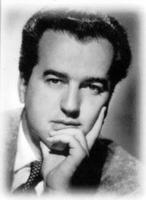Singing
Singing is the production of musical tones by the human voice. Singing has been a vital part of the life of people in all societies and cultures. The Indians and Inuit, original inhabitants of Canada, used singing to communicate with supernatural powers and in aspects of their work, rituals, dances and recreation. The European settlers who came to Canada brought their own wealth of folk songs (13 000 texts of French-language folk songs were collected by Marius BARBEAU) as well as sacred or secular songs. As songs and masses could be sung without instrumental accompaniment, singing was a very important part of recreation and religious ceremonies. Concert programs in the late 18th century included the singing of art songs and songs with instrumental accompaniment, as well as oratorio or opera selections with instrumental or orchestral accompaniment. The chamber opera Colas et Colinette (1788) by Joseph QUESNEL premiered in Montréal in 1790.
Mother de St Joseph, an Ursuline who came to Canada in the mid-1630s, was one of the first to train young singers. From about 1776 to 1900 singing schools were established in various locations, usually for brief periods, by itinerant teachers from the US who stressed music reading and on-pitch singing. Many fine singers came as immigrants to Canada and taught singing, and Canadian singers went abroad to study in various centres in Italy, Germany, France and England. Travelling theatrical companies visiting Canada from the US and Europe provided opportunities to hear singers.
Voice training entails developing the human body into a musical instrument and depends on posture, breath control, producing pure vowels, focusing tone and building resonance. Notable Canadian teachers of singing over the last 150 years include Achille Fortier, Rolande Dion, Guillaume COUTURE, Bernard Diamant, Irene Jessner, Emile Larochelle, Dorothy Allan Park, George Lambert, May Lawson, Helen Davies Sherry, Ernesto Vinci, Salvator Issaurel and Emmy Heim. As a result of the varied backgrounds of singing teachers, Canadian singers have been able to perform in various styles and in several languages. Emma ALBANI became one of the world's foremost sopranos and travelled the world taking leading opera roles and performing in concerts in major centres.
Other Canadian singers who have gained international fame are Lois MARSHALL, lyric soprano; Teresa STRATAS, lyric soprano; Mary MORRISON, soprano; Pauline DONALDA, soprano; Jeanne Dusseau, soprano; Phyllis Mailing, mezzo-soprano; Eva GAUTHIER, mezzo-soprano; Maureen FORRESTER, contralto; Jon VICKERS, dramatic tenor; Edward JOHNSON, tenor; Raoul JOBIN, tenor; Léopold SIMONEAU, lyric tenor; John Boyden, baritone; Louis QUILICO and Gino QUILICO, baritones; Morley Meredith, baritone; James Milligan, baritone; Donald Bell, bass-baritone; Claude Corbeil, lyric bass; Joseph ROULEAU, bass; Nancy Argentina, soprano; Donna Brown, soprano; Gerald Finley, baritone; Judith FORST, mezzo-soprano; Paul FREY, tenor; Ben HEPPNER, tenor; Richard MARGISON, tenor; Catherine ROBBIN, mezzo-soprano; Michael Shade, tenor; Edith Wiens, soprano.

 Share on Facebook
Share on Facebook Share on X
Share on X Share by Email
Share by Email Share on Google Classroom
Share on Google Classroom


